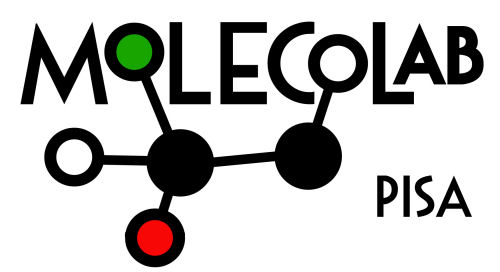
Electronic couplings are key to understanding exciton delocalization and transport in natural and artificial light harvesting processes. We develop a method to compute couplings in multichromophoric aggregates embedded in complex environments without running expensive quantum chemical calculations. We use a transition charge approximation to represent the quantum mechanical transition densities of the chromophores and an atomistic and polarizable classical model to describe the environment atoms. We extend our framework to estimate transition charges directly from the chromophore geometry, i.e., bypassing completely the quantum mechanical calculations using a regression approach. The method allows to rapidly compute accurate couplings for a large number of geometries along molecular dynamics trajectories.
Cignoni, E.; Cupellini, L. & Mennucci, B.
J. Phys. Condens. Matter 34, 304004 (2022) - https://doi.org/10.1088/1361-648X/ac6f3c

